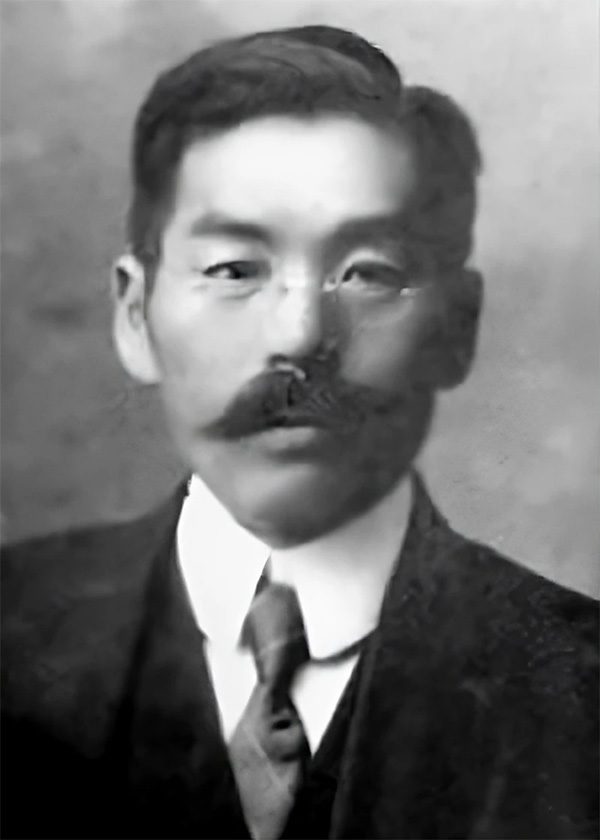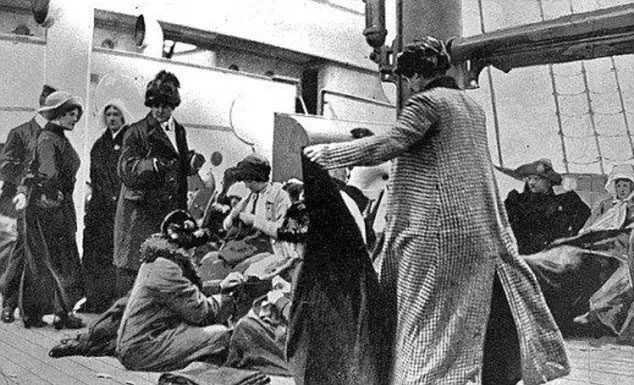To this day, the sinking of the Titanic remains one of the most intriguing events in maritime disaster history. But what continues to spark even more discussion is the colorful story of the survivors, including the poignant tale of Masabumi Hosono.
Before the Titanic set sail, Hosono was working in Russia as the Deputy Commissioner of the Railway Bureau of the Japanese Ministry of Transport, according to Japan Times.

Masabumi Hosono.
On his journey home, 42-year-old Hosono chose to board the Titanic in Southampton, England, instead of traveling through Russia. He was the only Japanese passenger on the ship and held a second-class ticket.
On the freezing evening of April 14, 1912, the maiden voyage of the RMS Titanic met with a deadly accident when the ship struck an iceberg.
Hosono’s diary of the disaster was made public by his family in 1997. He recounted being awakened by a knock on his cabin door. However, because he was a foreigner, he was directed to a lower deck, far from the lifeboats.
While awaiting his fate, an opportunity for survival presented itself when an officer preparing lifeboats announced that there were two spots available. A man quickly seized the chance and stepped forward. Hosono initially hesitated.
“I was engulfed in despair thinking I would never see my beloved wife and children again, as I had no choice but to share the fate of the Titanic,” Hosono wrote in a letter to his wife in the days following the disaster. “But when the first man jumped down, I was compelled to take this last opportunity.”

Survivors of the Titanic after being rescued.
Thus, he decided to take the chance, jumped into the lifeboat, and saved himself. He was among the 700 survivors of the disaster, while 1,500 others lost their lives.
Unlike Violet Jessop, a stewardess who survived the sinking, or Molly Brown, who “could not sink,” Hosono received a cold reception from his own homeland.
He faced severe criticism from the Japanese press, which at the time condemned the surviving men as cowardly and praised the bravery of those who perished. According to Metropolis Japan, he felt ashamed for not adhering to the principle of “women and children first” and avoiding an honorable death by sinking with the ship. Consequently, Hosono suffered what the Japanese call mura hachibu, or social ostracism.
He lost his job in 1914, according to AP. Although he was hired for part-time work, the stigma followed him for the rest of his life. Hosono lived in quiet shame until he passed away from natural causes in 1939. Even after his death, discussing the Titanic disaster remained taboo within his family.
According to The Brantford Expositor, the wave of derision surrounding Hosono’s survival continued into the 1990s, further fueled by negative public opinion from Japanese media following the release of James Cameron’s film Titanic.
In 1997, AP reported that he may have been mistaken for another Asian man on a different lifeboat. In reality, Hosono had actually helped row the lifeboat away from the sinking ship, rescuing other passengers.
Matt Taylor, an American researcher and Titanic scholar, investigated Hosono’s writings and told AP that this discovery had “effectively restored his honor and reputation.” Indeed, these revelations garnered increased public sympathy for Hosono.
Written on the rescue ship for Titanic victims, Hosono’s account is still regarded today as one of the most detailed records of what transpired on the ill-fated ship amid the chaos.


















































